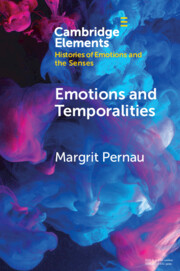Element contents
Emotions and Temporalities
Published online by Cambridge University Press: 15 September 2021
Summary
- Type
- Element
- Information
- Online ISBN: 9781108918701Publisher: Cambridge University PressPrint publication: 14 October 2021
Bibliography
- 12
- Cited by



